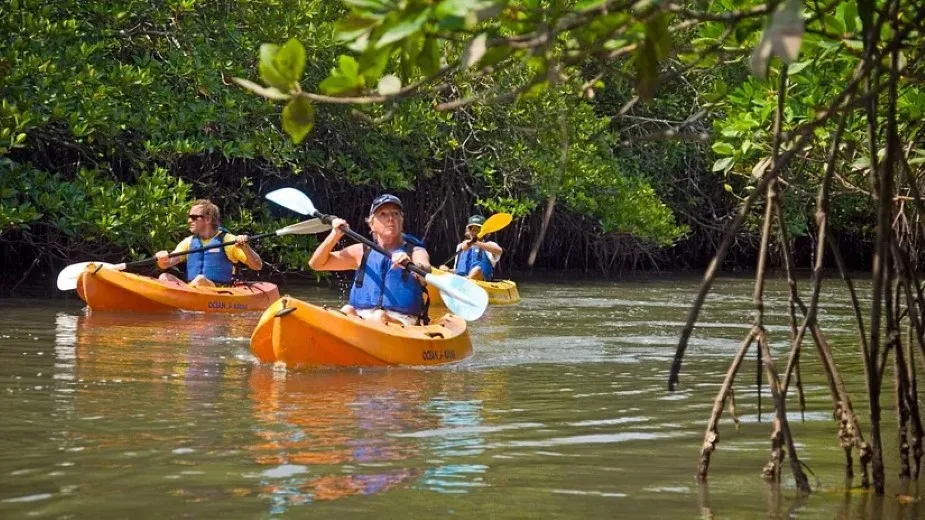The Peruvian Amazon is a fascinating land, full of dense rainforests, wide rivers, and amazing wildlife. Many travelers dream of exploring it, seeing pink dolphins swimming in the Amazon River, or walking among giant trees. To make the most of your trip, it’s key to know when to go. The best time to visit the Peruvian Amazon depends on your interests and the weather. In this article, you’ll find all the information about the dry and rainy seasons, their pros and cons, the best parks for each season, and useful tips for your adventure.
Weather in the Peruvian Amazon
The Amazon climate is warm and very humid year-round. Officially, the Peruvian Amazon has two well-defined seasons: the dry season (roughly from May to October) and the rainy season (November to April).
- Rainy Season (November – April): During this time, it rains heavily almost every day. The jungle becomes very green and lush, the rivers rise, and many trails flood. Humidity is high, there are more mosquitoes, and land access can become difficult. However, this season offers incredible landscapes and the chance to explore the forest by canoe, gliding between submerged trees.
- Dry Season (May – October): In this season, rainfall is minimal, the days are usually sunny and hot, and the ground is firmer, which makes long hikes easier. It’s also ideal for fishing and navigating smaller lakes and rivers. Nights can be cooler, especially between June and September.
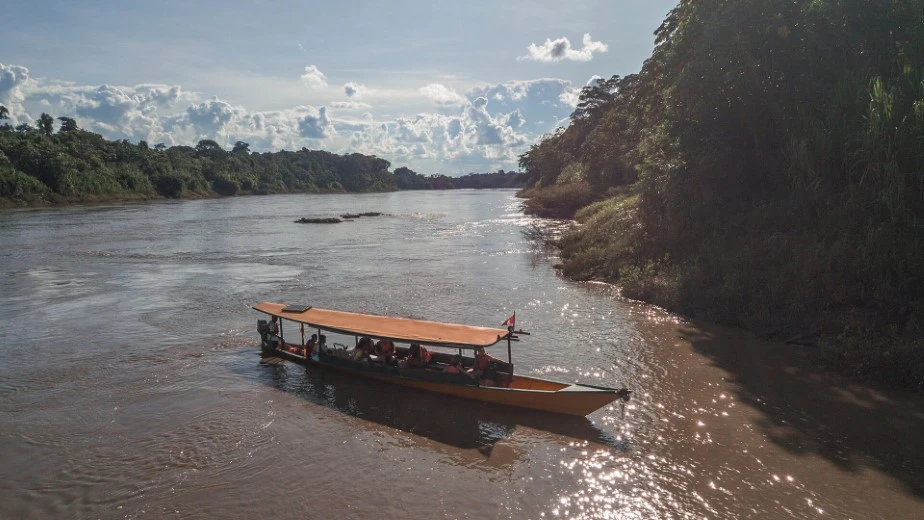
Regional Variations: The Case of Iquitos
In areas like Iquitos (Loreto region), an alternative classification is used: high-water season (December to May) and low-water season (June to November).
- High-water season: Rivers are at their highest, allowing you to reach remote areas by boat. However, rain is more frequent, and there are more insects.
- Low-water season: Trails are drier, making hiking and birdwatching easier, although some small rivers dry up.
Advantages and Disadvantages of Visiting the Peruvian Amazon During the Rainy Season
Advantages of the rainy season:
- The jungle becomes a true green paradise full of life.
- Increased activity of wildlife such as exotic birds, tapirs, capybaras, and reptiles.
- Rising rivers allow you to explore the forest by canoe and access remote areas.
- Fewer tourists, offering a more peaceful experience.
- Cools the environment and helps avoid excessive heat.
Traveling during the rainy season can be a great option for those seeking adventure and tranquility. That’s why for some travelers, the best time to visit the Peruvian Amazon might be between January and March, when the landscapes are at their lushest.
Disadvantages of the rainy season:
- Constant rain that may disrupt excursions.
- Muddy and impassable trails.
- More mosquitoes and higher humidity.
- Reduced visibility due to fog or rain.
- Possible flight or transport cancellations due to bad weather.
- Some water activities may be more dangerous because of strong currents.

Advantages and Disadvantages of Visiting the Peruvian Amazon During the Dry Season
Advantages of the dry season:
- Firm trails, perfect for long jungle hikes.
- More sunlight hours, ideal for wildlife viewing.
- Higher bird activity, especially between June and September.
- Easier to navigate major rivers.
- Lower risk of weather-related cancellations.
During this season, many tour operators agree that the best time to visit the Peruvian Amazon is between June and August, when conditions are most comfortable for all types of travelers.
Disadvantages of the dry season:
- Hotter weather, requiring good hydration.
- Strong sun, so sunscreen is necessary.
- Some rivers and streams shrink or dry up.
- More tourists due to the high season.
- Occasional rains may still happen.
If you prefer dry weather, sun, and outdoor activities, then the best time to visit the Peruvian Amazon is definitely the dry season.

Ideal Season to Visit the Peruvian Amazon
- Dry Season: If you want comfort, hiking, and stable weather, choose the dry season—especially between June and August, when there’s less rain, clear skies, and better conditions for photography and wildlife spotting. It’s ideal for families, trips with kids, or those seeking reliable travel plans.
- Rainy Season: If you prefer adventure, dramatic scenery, and fewer crowds, consider the rainy season. The forest is greener and more vibrant, and canoe tours give access to areas not reachable during the dry season. It’s also the best time to see pink dolphins and aquatic animals.
Both seasons have their charm. The best time to visit the Peruvian Amazon depends on the type of experience you want to live.
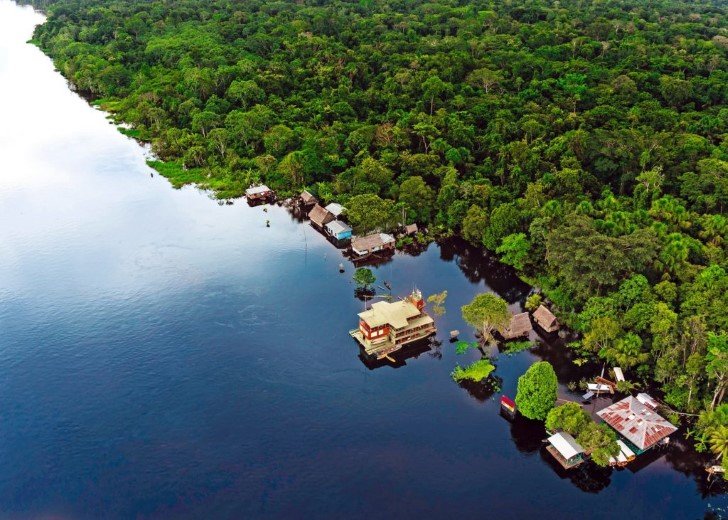
Best Nature Reserves and National Parks in Peru by Season
The best time to visit the Peruvian Amazon also depends on the park or reserve you plan to explore.
Dry Season (May–October):
- Tambopata (Madre de Dios): Accessible trails, macaw clay licks, visit to Lake Sandoval, and sightings of giant otters.
- Manu National Park: Diverse ecosystems with high biodiversity.
- Pacaya-Samiria (Loreto): Ideal for river tours through varzea forest with manageable water levels.
Rainy Season (November–April):
- Pacaya-Samiria: Transforms into a flooded forest. Great for canoeing, spotting pink dolphins, and aquatic wildlife.
- Iquitos Region: Boat rides through natural canals and visits to lakes like El Dorado.
- Tambopata: Excellent for wildlife photography, such as macaws and monkeys in their natural habitat.
No matter the month, the best time to visit the Peruvian Amazon can be successfully planned if you rely on a specialized tour operator like Peru Jungle Trips, which organizes custom expeditions with local experts.

How to Prepare for an Amazon Adventure in Peru
- Book with a reliable agency: Such as Peru Jungle Trips, which organizes complete expeditions with local native guides and appropriate transportation.
- Take care of your health: Updated vaccinations (such as yellow fever), strong insect repellent, protective clothing, and safe drinking water.
- Be prepared for mosquitoes: Wear light-colored, long-sleeved clothing, mosquito nets, and repellent.
- Respect nature: Do not feed animals or leave trash. Be a responsible tourist.
- Bring the right gear: Camera, binoculars, dry bags, flashlight, extra batteries, and a first aid kit.
For any season, the best time to visit the Peruvian Amazon is when you are well-prepared to enjoy every moment.

What to Bring to the Peruvian Amazon During the Dry and Rainy Seasons
Dry Season:
- Light, breathable, long-sleeved clothing
- Comfortable or waterproof boots
- Hat, sunglasses, and sunscreen
- Rain poncho, even if it doesn’t rain much
- Waterproof backpack and bag for camera/phone
- Insect repellent and binoculars
Rainy Season:
- Waterproof jacket and pants
- Rubber boots with good grip
- Quick-dry clothing
- Dry bags to protect gear
- Headlamp, spare batteries, and mosquito net
- Repellent and waterproof cap
Knowing what to pack will make the best time to visit the Peruvian Amazon also your most comfortable and safest experience. In both seasons, humidity and insects are constant, so it’s crucial to pack everything needed to stay protected.
Frequently Asked Questions About the Best Time to Visit the Peruvian Amazon
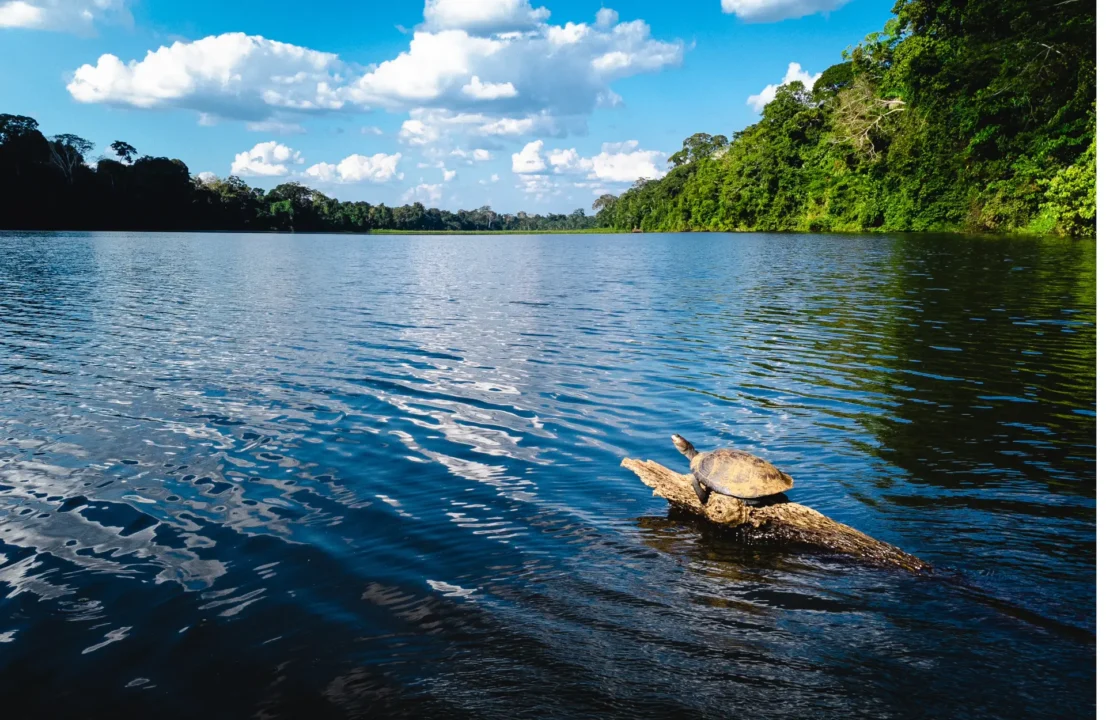
1. What is the best time to travel to the Peruvian Amazon?
The best time to visit the Peruvian Amazon is between May and October, during the dry season. During these months, there’s less rain, more sunny days, and better trail conditions, making it easier and more comfortable to explore. If you’re looking for a more wild and lush experience, you can also consider the rainy season (November to April), when the landscapes are greener and there are fewer tourists.
2. What is the ideal month to travel to the Peruvian Amazon?
June, July, and August are the ideal months to travel to the Peruvian Amazon because the weather is more stable, trails are dry, and wildlife activity is high. These months are perfect for excursions, hiking, and photo safaris. If you prefer to avoid crowds and don’t mind the rain, January or February may be an attractive option for a more intimate and different experience.
3. When is the best time to see pink river dolphins in the Amazon?
Pink river dolphins are easier to spot during the rainy season, from December to May. During this time, rivers swell, and these aquatic mammals move into flooded areas, making sightings more likely. It’s an excellent moment for wildlife lovers and nature photographers, as the environment is full of life and color.
4. What is the high and low season in the Peruvian jungle?
- High season: June to August, dry season, with more tourists
- Low season: November to April, rainy season, with fewer travelers, but more humidity and frequent rain
Remember, the best time to visit the Peruvian Amazon depends on your expectations, interests, and adventure level.
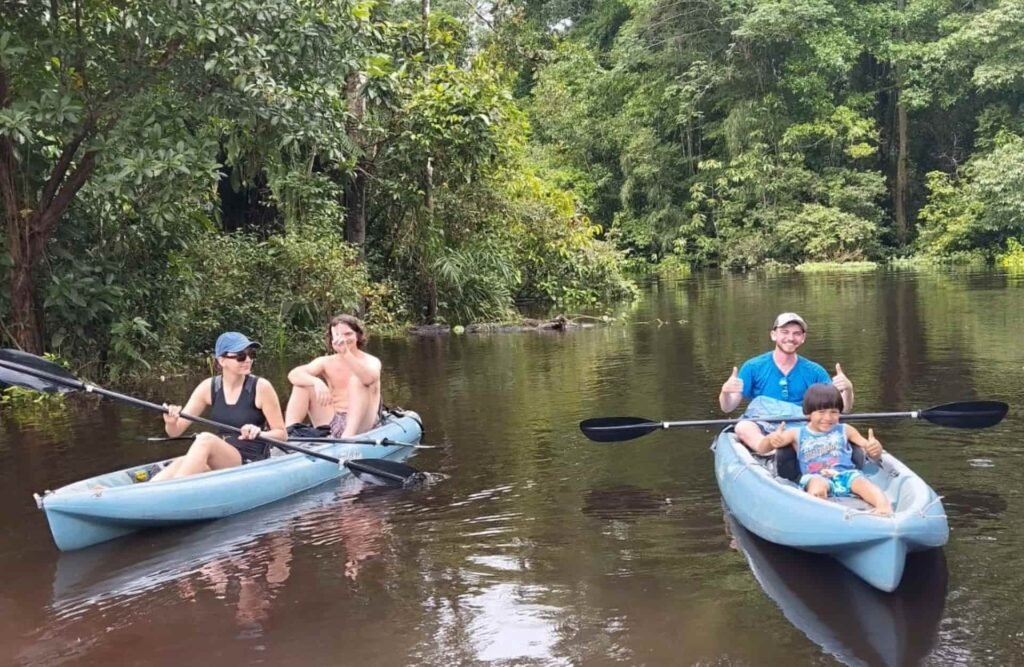
The best time to visit the Peruvian Amazon depends on your travel style, but both the dry and rainy seasons offer unforgettable experiences. Whether you’re looking for dry trails and blue skies, or flooded jungles full of life, the Peruvian Amazon awaits with unique adventures. Trust Peru Jungle Trips to help you plan your journey in a safe, authentic, and responsible way.
Tours to Visit the Peruvian Amazon
- Tambopata Jungle Tour (3 Days)
- Sandoval Lake + Parrot clay lick + Native Community (4 days)
- Collpa Chuncho Macaw Clay Lick + Sandoval Lake & Yacumama Lake (4 Days)
- Iquitos Jungle Tour (4 Days) – Private
- Iquitos Peru Amazon Tours (5 Days) – Private
- Pacaya Samiria National Reserve (4 Days)
- Pacaya Samiria National Reserve (5 Days)

